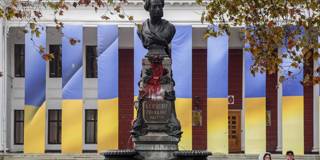OnPoint Subscriber Exclusive
Longer Reads provide in-depth analysis of the ideas and forces shaping politics, economics, international affairs, and more.

When Art Is All That Remains
History is littered with petty tyrants who have exploited art and culture for their own ends. Nonetheless, wars and crises tend to reveal the true, unrivaled power of art, which is often the last redoubt of freedom in the face of the suffering that such politicians cause.
SALZBURG – Early in this century, I was told, the United Kingdom compiled a list of the ten most important actions to take in the event of an emergency. One was to save the renowned Titian paintings housed at the National Gallery. Just imagine if masterpieces like Noli me tangere (1514) and An Allegory of Prudence (c.1550-65) were to suffer the same fate (looting by thieves) as the treasures of the Iraq National Museum in Baghdad after the US invasion in 2003.